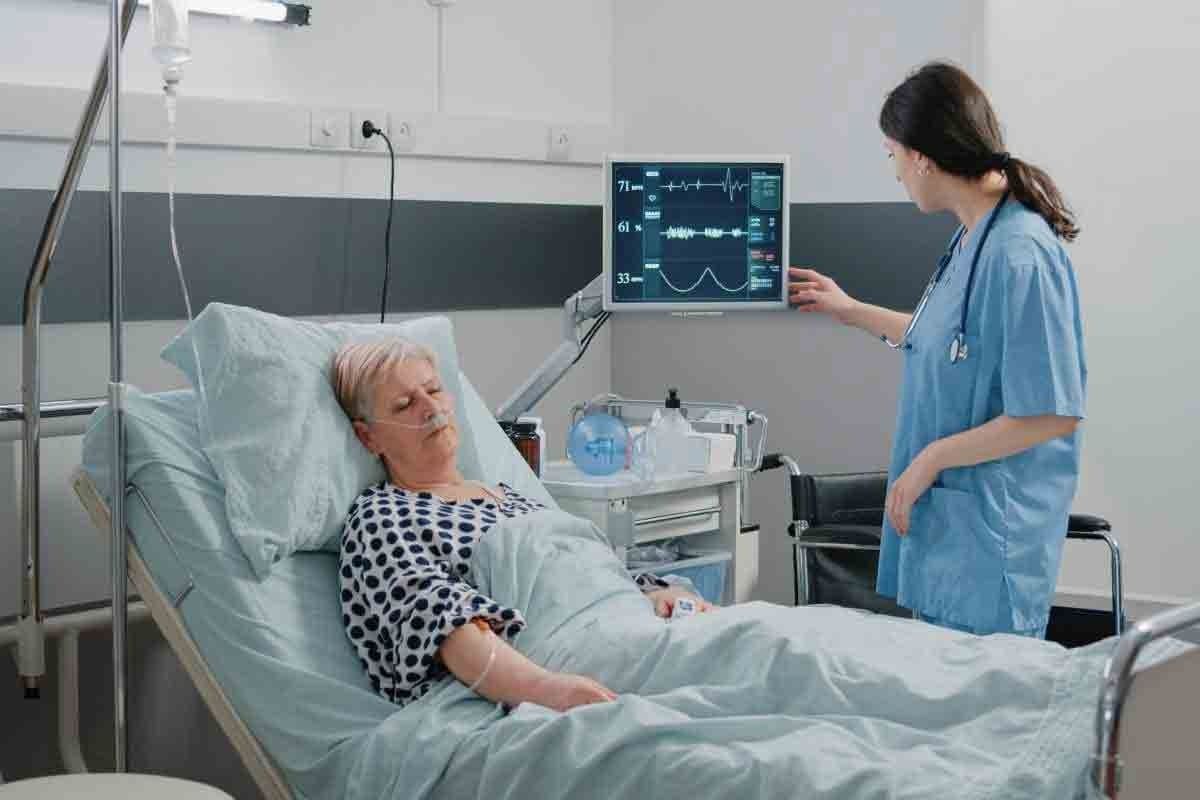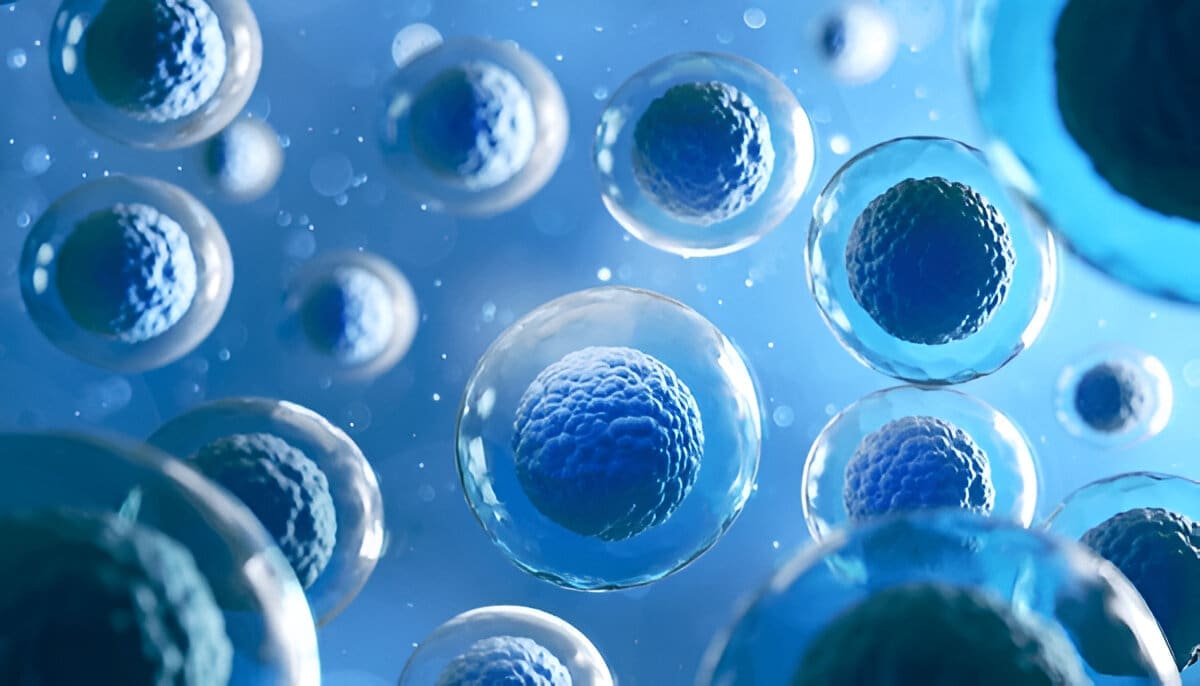Last Updated on November 27, 2025 by Bilal Hasdemir

When it comes to liver health, having the right imaging tool is key. It helps doctors see what’s happening inside and make accurate diagnoses. At Liv Hospital, we use the latest technology to give you precise results and effective care.
A CT liver with contrast scan is highly effective in detecting liver problems. It can identify up to 93% of issues and has an accuracy rate of 95.5%. This makes CT liver with contrast an essential test for diagnosing liver conditions and helping doctors plan the best treatment for you.
Key Takeaways
- High diagnostic accuracy in detecting liver lesions
- Effective in distinguishing between benign and malignant lesions
- Utilizes advanced technology for precise imaging
- Shapes diagnosis and treatment plans
- Offers targeted care for specific patient needs
The Fundamentals of Liver CT Scanning
CT scans of the liver are a key tool in medical imaging. They give us a detailed look at the liver’s complex structure. We’ll dive into the basics of this technology and its role in diagnosing liver issues.
What Exactly is a CT Scan of the Liver?
A CT (Computed Tomography) scan of the liver is a non-invasive test. It uses X-rays to create detailed images of the liver and its surroundings. This technology is vital for spotting liver problems like tumors and cysts.
Recent studies show CT scans are essential for diagnosing and treating liver diseases (PMC6837820).
How CT Technology Creates Detailed Liver Images
CT technology combines X-rays and computer tech to create liver images. It rotates an X-ray machine around the body to capture images from different angles. These images are then pieced together into detailed cross-sections.
Using contrast agents during a CT scan makes liver structures and lesions more visible. These agents are injected into the bloodstream to highlight specific areas during the scan.
The Evolution of Liver Imaging Technology
Liver imaging technology has seen big changes, with CT scans leading the way. Modern CT scanners produce higher quality images faster and more accurately. These advancements have also led to new techniques, like dynamic contrast-enhanced CT scans.
These new techniques give us valuable insights into liver function and blood flow.
| Technology | Description | Benefits |
| CT Scan | Non-invasive imaging using X-rays | Detailed images of liver structure |
| Contrast Agents | Substances highlighting liver structures | Enhanced visibility of lesions |
| Dynamic Contrast-Enhanced CT | Technique assessing liver function and perfusion | Valuable information on liver health |
CT Liver with Contrast: How It Works and Why It Matters
Contrast agents in CT liver scans have changed how we find and treat liver diseases. They make images clearer by showing the differences between tissues. This is key for making accurate diagnoses.
The Critical Role of Contrast Agents in Liver Imaging
Contrast agents are essential in liver imaging. They help show the differences between liver tissues and problems. They are great for spotting liver lesions, tumors, and blood vessels. The agent is given through an IV and goes to areas of the liver based on blood flow and tissue type.
Using contrast agents in liver CT scans has many benefits:
- They help find liver lesions and tumors better.
- They make liver blood vessels clearer.
- They help tell different liver tissues apart.
- They give a more accurate look at how severe liver disease is.
Types of Contrast Media Used in Modern Liver CT
Today, liver CT scans mostly use iodine-based contrast media. These are safe and work well, making images clearer. The type of contrast agent used can depend on the patient’s kidney function, allergies, and the scan’s needs.
Good contrast media should have:
- High iodine levels for better contrast.
- Low osmolality to lower the chance of bad reactions.
- A stable formula for consistent results.
How Contrast Enhances Diagnostic Capabilities
Contrast in CT liver scans makes diagnosing better. It gives clearer images of liver structures and problems. This helps doctors make more accurate diagnoses and plan better treatments.
Key benefits include:
- They help spot small liver lesions better.
- They help figure out what liver masses are.
- They show liver blood flow and hemodynamics better.
- They help stage liver cancers more accurately.
By using contrast-enhanced CT scans, we can give patients more precise diagnoses. This leads to better treatment plans and outcomes in liver disease management.
Understanding the Three Phases of Liver Enhancement
Diagnosing liver conditions requires knowing the liver’s enhancement phases during a CT scan. The liver gets blood from two sources: the hepatic artery and the portal vein. This makes its enhancement pattern complex and multi-phasic.
Arterial Phase: Capturing Early Abnormalities
The arterial phase happens 20-30 seconds after contrast is injected. It shows the liver’s early enhancement and any lesions. This phase is key for spotting hypervascular lesions, like hepatocellular carcinoma, which enhance intensely.
We use the arterial phase to find abnormalities mainly supplied by the hepatic artery.
Venous Phase: Maximum Parenchymal Visualization
The venous or portal venous phase is reached around 60-70 seconds after injection. It gives the best view of the liver’s tissue. The contrast in the portal vein makes the liver’s background clearer, helping spot hypovascular lesions.
This phase is great for understanding lesion characteristics and the liver’s shape.
Delayed Phase: Evaluating Fibrosis and Washout Patterns
The delayed phase, or equilibrium phase, happens several minutes after contrast is given. It’s good for checking fibrosis and lesion washout patterns. Some lesions, like cholangiocarcinoma, show more enhancement on delayed images.
A study in Nature highlights the importance of these phases for accurate diagnosis.
Understanding these three phases helps us better detect and characterize liver lesions. This leads to better care for patients.
Impressive Diagnostic Accuracy: 93% Sensitivity and 95.5% Accuracy
CT liver scans with contrast show amazing accuracy. They can spot liver problems up to 93% of the time and are right 95.5% of the time. This high precision is key for catching liver issues early.
Breaking Down the Statistical Significance
The numbers behind these results are huge. A 93% sensitivity means 93 out of 100 people with liver issues are found by the scan. The 95.5% accuracy shows the scan is good at telling normal from abnormal livers.
Let’s look at the numbers in a table:
| Diagnostic Metric | Percentage | Implication |
| Sensitivity | 93% | High detection rate for liver abnormalities |
| Diagnostic Accuracy | 95.5% | High reliability in distinguishing normal from abnormal conditions |
| False Negatives | 7% | Potential for missed diagnoses |
How Dynamic Contrast Techniques Improve Detection Rates
Dynamic contrast techniques are key to better CT liver scans. They use contrast agents to show the liver’s blood vessels. This helps spot problems more clearly.
This method takes pictures at different times when the contrast is most visible. It gives a full view of liver lesions.
Distinguishing Between Benign and Malignant Lesions
CT liver scans with contrast are great at telling apart good and bad liver spots. They look at how spots change with contrast to make accurate diagnoses.
Malignant spots quickly lose contrast, while benign ones keep it. Knowing this helps doctors decide the best treatment.
Preparing for Your Liver CT Scan with Contrast
To get the most out of your liver CT scan with contrast, it’s key to know the prep steps. Proper prep ensures the scan’s success and the accuracy of the images.
Essential Pre-Scan Instructions
Before your liver CT scan, follow these steps to prepare. First, you’ll learn if you need to fast or avoid certain foods and drinks. This is important because food or certain substances can impact image quality. You might also be told to:
- Arrive early to fill out any needed paperwork and prep.
- Avoid jewelry or clothes with metal, as they can interfere with the scan.
- Tell your healthcare provider about any meds you’re taking, as some might need to be adjusted.
Important Medical Information to Disclose
Sharing your full medical history with your healthcare provider is vital before a liver CT scan with contrast. This includes:
| Medical Information | Why It’s Important |
| Diabetes and kidney function | To assess the risk of contrast-induced nephropathy. |
| Allergies, specially to contrast agents | To prevent allergic reactions during the scan. |
| Pregnancy or breastfeeding status | To evaluate the risks and benefits of the contrast agent. |
What to Expect on the Day of Your Procedure
On the day of your liver CT scan, here’s what you can expect:
The procedure will usually take less than 30 minutes. You’ll lie on a table that slides into the CT scanner. You’ll be asked to stay very quiet and hold your breath at times for clear images.
By knowing what to expect and following the pre-scan instructions, you can help make sure your liver CT scan with contrast goes well. It will give your healthcare team the info they need.
The Patient Experience During a CT Liver Scan
Getting a CT liver scan might seem scary, but we’re here to help. This scan is a key tool for doctors to check your liver. Knowing what to expect can make you feel more at ease.
Step-by-Step Walkthrough of the Procedure
The CT liver scan process starts with getting ready. You’ll wear a hospital gown and take off any metal or jewelry. Then, you’ll lie on a table that moves into the CT scanner.
The radiographer will make sure you’re in the right spot. You might need to hold your breath for a few seconds. This helps get clear images.
The Sensation of Contrast Injection Explained
A contrast agent will be given through a vein in your arm. You might feel a pinch or stinging. The agent might make you feel warm or cold, but it’s temporary and not usually painful.
Tell your doctor about any allergies or concerns. They’ll talk to you about any risks and benefits.
Duration and Positioning Requirements
The whole CT liver scan takes about 15-30 minutes. The actual scan is quick. You’ll need to stay very quiet and not move while it’s happening.
| Procedure Step | Duration | Requirements |
| Preparation | 5-10 minutes | Remove metal objects, change into a hospital gown |
| Contrast Injection | 1-2 minutes | IV line placement, contrast agent injection |
| Scanning | 1-2 minutes | Hold breath, remain silent |
Knowing these steps can help you feel more ready for the CT liver scan. It makes the whole experience less scary and more manageable.
Can CT Scan Find Liver Issues? Conditions Accurately Detected
CT scans have changed how we check the liver, helping us find many liver issues accurately. The liver is key to our health, and it can face many problems.
CT scans are great for looking at the liver’s details. They help spot problems and make accurate diagnoses.
Liver Tumors and Masses: Detection Capabilities
CT scans are top-notch at finding liver tumors and masses. They can spot both harmless and harmful growths. Doctors can tell the difference by looking at how the tumor reacts during the scan.
When finding liver tumors, CT scans check their size, where they are, and how they get blood. They also help with biopsies by showing exactly where to take a sample.
Assessment of Fatty Liver Disease
Fatty liver disease can be checked well with CT scans. They can see how much fat is in the liver. This is key for diagnosing and treating the disease.
CT scans look at how much light the liver blocks. This goes down with fat. By comparing this to the spleen, doctors can see how bad the fatty liver is.
Cirrhosis and Fibrosis Evaluation
CT scans are also good for checking cirrhosis and fibrosis. They can see the liver’s shape and look for signs of cirrhosis like nodules and shrinkage.
They also measure the liver’s size and look for problems like varices and fluid buildup. New CT methods can even measure how much fibrosis there is, helping doctors understand the disease’s stage.
Advanced Techniques in Modern CT Liver Imaging
Modern CT liver imaging has seen big changes. It now uses advanced techniques to get better at finding problems early. These new methods help us see how well the liver is working and treat it better.
Fractional Extracellular Space Assessment
Fractional extracellular space (fECS) assessment is a new way to look at the liver. It measures the space outside liver cells. This helps us understand liver fibrosis and inflammation better.
Quantitative Analysis of Healthy vs. Abnormal Tissue
Quantitative analysis in CT liver imaging helps us tell healthy tissue from abnormal. It uses CT perfusion and dual-energy CT to check liver function. This makes finding liver problems more accurate.
The table below shows how healthy and abnormal liver tissue differ in CT scans:
| Parameter | Healthy Tissue | Abnormal Tissue |
| Density (HU) | Normal range: 50-70 HU | Varied; often lower in fatty liver |
| Enhancement Pattern | Homogeneous enhancement | Heterogeneous or rim enhancement in lesions |
| Fractional Extracellular Space | Low fECS | Elevated fECS in fibrosis and inflammation |
State-of-the-Art Protocols for Early Detection
Modern CT liver imaging uses the latest methods for early disease detection. These include low-dose CT, high-resolution images, and special contrast agents. These tools help us spot liver issues early, making treatment more effective.
Potential Risks and Safety Considerations
CT scans for liver imaging, with contrast, have both benefits and risks. It’s important to understand these to ensure safety.
Radiation Exposure: Facts vs. Misconceptions
CT scans use more radiation than X-rays. But, they are often necessary for accurate diagnosis. A study on PMC shows their value in patient care.
The dose from a CT scan is measured in millisieverts (mSv). A chest X-ray is about 0.1 mSv. But, a CT abdomen/pelvis scan can be 10 to 30 mSv. New CT technology helps reduce doses, making scans safer.
Contrast Agent Reactions: Frequency and Management
Contrast agents in CT scans can cause reactions. These can range from mild to severe, like anaphylaxis. But, severe reactions are very rare, happening in less than 0.1% of cases.
Before the scan, patients are checked for allergies and kidney function. If a reaction happens, medical staff can quickly respond.
Who Should Consider Alternative Imaging Methods
Some people might need other imaging methods instead of CT scans. Pregnant women and those with severe kidney disease are examples. This is because of radiation risks or the chance of kidney problems from contrast agents.
For these groups, MRI or ultrasound might be better. This shows how medical imaging has evolved, giving us more choices for diagnosis.
CT Liver Scans vs. Other Imaging Modalities
Choosing the right tool for liver imaging is very important. Different imaging methods have their own strengths. Knowing these differences helps pick the best test for each patient.
CT vs. MRI for Liver Assessment
CT scans and MRI are both key for liver checks. CT scans are great for finding liver problems and seeing the liver’s layout. They do this quickly and with high detail.
MRI shines in showing soft tissue details. It’s perfect for looking at liver lesions and blood flow without radiation.
| Imaging Modality | Strengths | Weaknesses |
| CT Scan | High spatial resolution, quick imaging | Ionizing radiation, contrast required |
| MRI | Superior soft tissue contrast, no radiation | Longer examination time, higher cost |
CT vs. Ultrasound: When Each is Preferred
Ultrasound is often the first choice for liver scans. It’s safe, doesn’t use radiation, and shows things in real-time. But, it depends on the person doing the scan and might not show all details.
CT scans are better for detailed liver images. They’re used when there’s a chance of cancer or to see how widespread liver disease is.
Complementary Imaging Approaches for Complex Cases
In tough liver cases, doctors might use more than one imaging method. A patient might start with an ultrasound, then get a CT scan for more info. They might also get an MRI to really look at lesions.
This way, doctors get a full picture of what’s going on. This helps them make better diagnoses and treatment plans.
What Makes a Healthy Liver CT Scan: Normal vs. Abnormal Findings
Knowing what a healthy liver CT scan looks like is key for good care. We’ll look at what makes a liver appear normal on CT scans. We’ll also talk about common problems and why expert opinions matter.
Characteristics of a Normal Liver on CT Images
A normal liver CT scan looks even and has smooth edges. It’s a bit denser than the spleen on plain images. When contrast is added, the liver shows a specific pattern at different times.
Key features of a normal liver CT scan include:
- Homogeneous parenchyma
- Smooth liver contours
- Normal size and shape
- Typical enhancement pattern on contrast-enhanced scans
Common Abnormal Findings and Their Clinical Significance
Liver CT scans can show many issues like tumors, cysts, and fatty changes. How serious these problems are depends on their type and size.
Some common abnormal findings include:
- Liver masses or tumors
- Cysts or abscesses
- Fatty liver disease
- Cirrhosis or fibrosis
- Vascular abnormalities
The Importance of Expert Interpretation
Getting a liver CT scan read by an expert is vital. They look at the scan, the patient’s history, and other details to give a full report.
The benefits of expert interpretation include:
- Accurate diagnosis of liver conditions
- Guidance for appropriate treatment strategies
- Monitoring of disease progression or response to treatment
- Detection of subtle abnormalities that may be missed by less experienced interpreters
Understanding what a healthy liver CT scan looks like helps doctors give the best care. They can spot and treat liver problems better.
Conclusion: Advancing Liver Care Through Precision Imaging
Precision imaging has changed liver care a lot. It helps doctors find and treat liver problems better. Advanced CT liver scans with contrast make it easier to spot liver issues.
This new way of looking at the liver has changed how we diagnose and treat it. CT scans help us catch liver problems early. This means we can start treatment sooner and manage liver disease better.
We keep working to improve liver care with precision imaging. Our goal is to give top-notch healthcare to everyone. With precision imaging, we can make a big difference in people’s lives all over the world.
FAQ
What is a CT scan of the liver with contrast?
A CT scan of the liver with contrast is a test that uses X-rays and a special dye. It makes detailed images of the liver. This helps doctors find and diagnose liver problems.
How does a CT liver scan with contrast work?
A CT liver scan with contrast works by injecting a dye into a vein. Then, X-rays capture images of the liver. The dye makes liver structures and problems more visible.
What are the three phases of liver enhancement during a CT scan?
The three phases are the arterial, venous, and delayed phases. Each phase shows different liver functions. They help doctors diagnose various conditions.
Can a CT scan detect liver issues such as tumors or fatty liver disease?
Yes, a CT scan with contrast can find liver problems like tumors and fatty liver disease. It can also spot cirrhosis and fibrosis with high accuracy.
What are the possible risks of a CT liver scan with contrast?
Risks include radiation exposure and reactions to the dye. But these risks are low. The benefits of the scan usually outweigh the risks.
How does a CT liver scan compare to MRI or ultrasound?
CT scans, MRI, and ultrasound are different imaging methods. CT scans are often chosen for their high sensitivity. MRI and ultrasound may be used in specific cases or to add more information.
What should I expect during a CT liver scan procedure?
During the procedure, you’ll lie on a table that slides into a CT scanner. The dye will be injected, and then the scan will start. The whole process usually takes 15-30 minutes.
How do I prepare for a CT liver scan with contrast?
Preparation includes fasting for a few hours and telling your doctor about your health. You’ll also follow specific instructions from your healthcare provider.
What are the characteristics of a healthy liver on a CT scan?
A healthy liver on a CT scan looks uniform and has smooth contours. It’s important for experts to interpret these images to spot any issues.
Can a CT scan tell the difference between benign and malignant liver lesions?
Yes, a CT scan with contrast can tell the difference between benign and malignant lesions. It does this by looking at how the lesions enhance and their characteristics.
Reference
Diagnostic accuracy of contrast-enhanced CT for esophageal varices in cirrhosis






